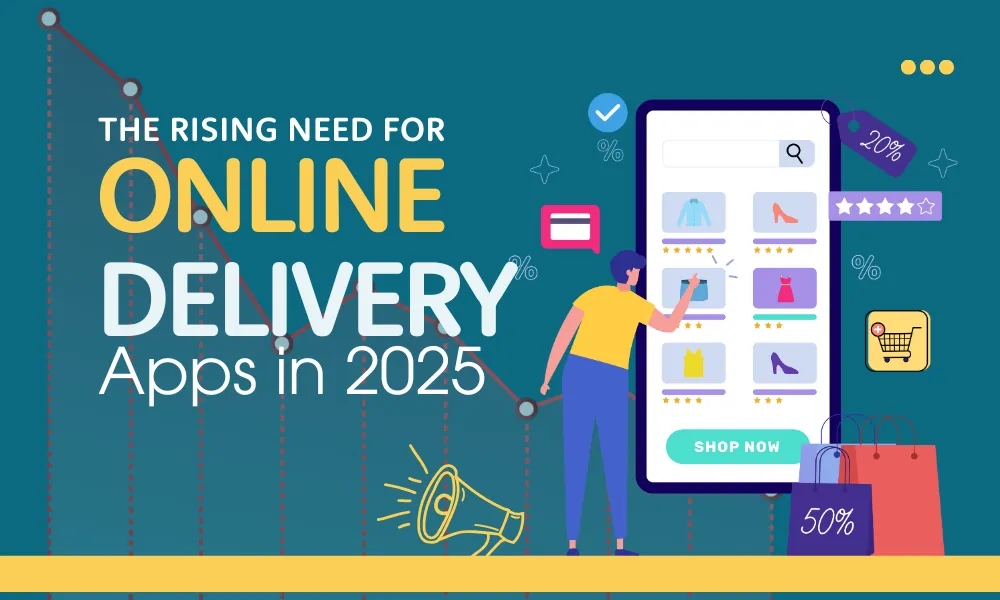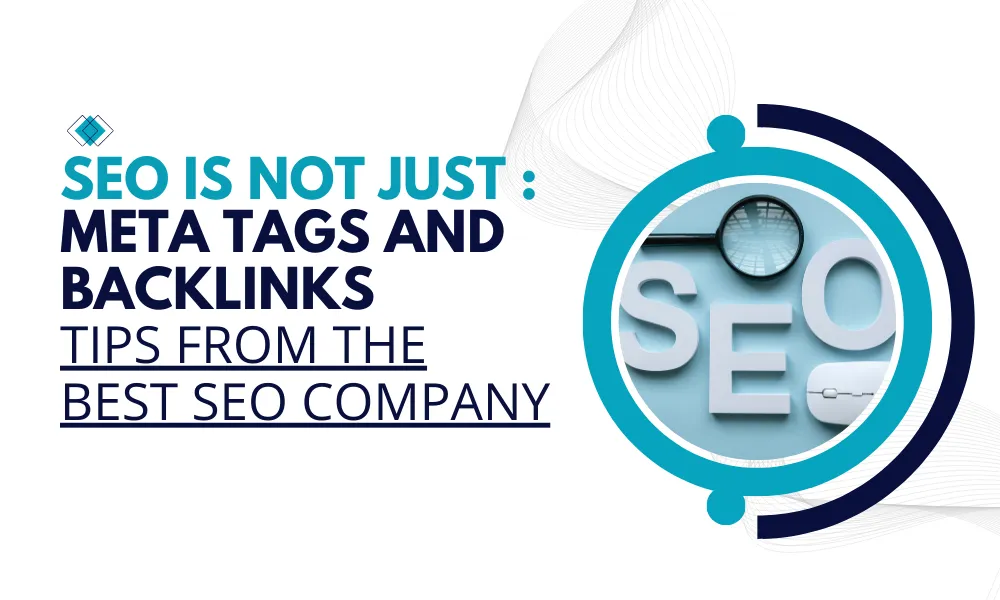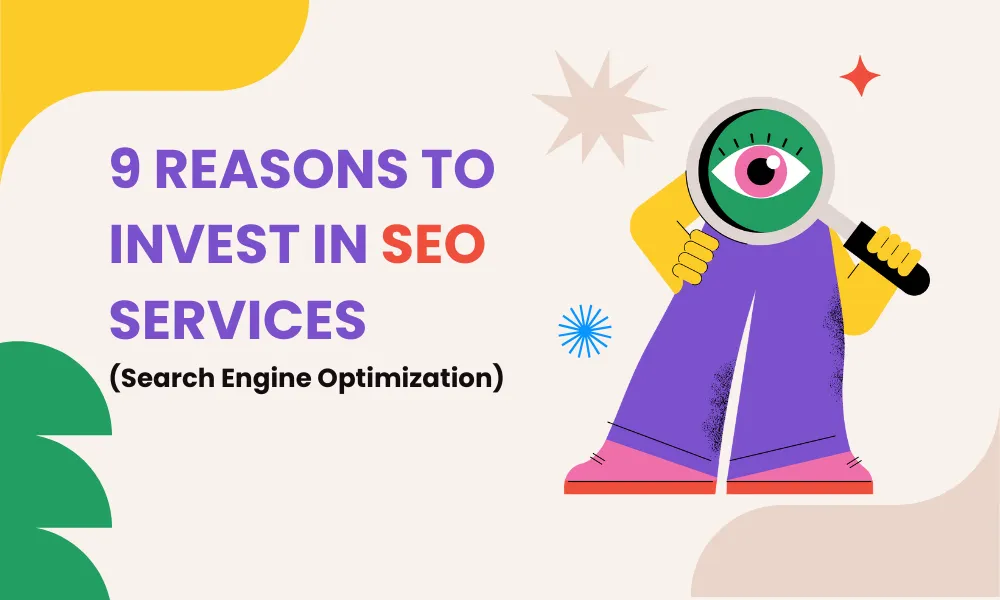Digital marketing can often feel like a maze, with ever-changing algorithms and new trends emerging daily. For businesses, keeping up can be overwhelming. That’s where a reliable digital marketing agency in Kochi, like bornov technologies, comes in. But the key to a successful partnership isn’t just delivering results—it’s ensuring clients understand them. Educating clients isn’t just an added benefit; it’s a game-changer. It builds trust, fosters collaboration, and paves the way for long-term success.Why Does Client Education Even Matter?Imagine this: you’ve launched a high-performing campaign, and the results are impressive. But there’s a problem—your client doesn’t understand how you got there. They start questioning your approach, requesting unnecessary changes, or worse—doubting your expertise. Frustrating, right? It doesn’t have to be.When clients grasp the “why” behind your strategies, they shift from passive observers to active partners. At bornov technologies, we do more than just execute campaigns—we educate. Whether it’s explaining the mechanics of SEO or the reasoning behind a social media strategy, we keep our clients informed. Because an informed client isn’t just satisfied—they’re empowered.The Magic of a Performance Marketing AgencyOur job isn’t just to hit targets—it’s to ensure our clients understand their impact. Instead of simply reporting, “Your website traffic grew by 30%,” we break it down—showing how that increase leads to more leads, stronger brand visibility, and ultimately, higher sales. When clients see the bigger picture, they trust the process and stay committed to strategies that drive real results. And that’s where the real magic happens.How Educating Clients Creates a Win-Win1. Trust Becomes the Foundation: When clients understand your strategies and the reasoning behind them, they build confidence in your expertise. This trust leads to stronger, long-term partnerships.2.Collaboration Becomes Seamless: Informed clients don’t just observe—they engage. Their insights and feedback can elevate campaigns to new heights.3.Miscommunication Disappears: Clear explanations minimize misunderstandings, keeping everyone aligned and ensuring a smoother workflow.4.Results Drive Action: Clients who understand the impact of their investment are more likely to commit to high-performing strategies—leading to better outcomes for everyone.Let’s Talk About YouIf you’re a business owner, you might be wondering, “How does this apply to me?” It’s simple. When you partner with a digital marketing agency in Kochi like bornov technologies, you’re not just getting a team to run ads or manage social media—you’re gaining a partner committed to your success. We don’t just deliver results; we make sure you understand and celebrate them.And if you’re a marketer, here’s a reminder: your clients don’t need to be experts in your field, but they should feel confident in your work. Education is the bridge that makes that happen. Wrapping It UpAt bornov technologies, we go beyond performance marketing agency we’re your trusted partners in the dynamic world of digital marketing. By focusing on client education, we bridge the gap between curiosity and clarity, turning collaboration into success.Whether you’re a business owner ready to scale or a marketer refining your strategy, one thing is certain: shared knowledge leads to shared success. Ready to take the next step? Let’s connect and make it happen!
Digital Marketing: Key Trends for 2025
The digital marketing landscape is evolving rapidly, and 2025 is shaping up to be a transformative year for businesses worldwide. With advancements in AI, automation, and consumer behavior changes, staying ahead of trends is crucial for success. Let’s explore the top digital marketing trends that will define 2025 and how your brand can leverage them to stay competitive. AI & Automation: The Future of Marketing Artificial Intelligence (AI) is revolutionizing digital marketing, enabling businesses to automate processes, analyze vast amounts of data, and enhance customer experiences. AI-powered chatbots, personalized content recommendations, and predictive analytics will help brands deliver targeted marketing like never before. The Rise of Short-Form Video Content Platforms such as TikTok, Instagram Reels, and YouTube Shorts remain at the forefront of digital content. With shrinking attention spans, businesses must focus on engaging, bite-sized videos to capture audience interest quickly. Storytelling in short-form content will be key to increasing engagement and brand visibility. Voice & Visual Search Optimization Voice search is becoming the norm, with more people using Siri, Alexa, and Google Assistant to find information. Additionally, visual search technology is expanding, allowing users to search using images. Optimizing for conversational keywords and structured data will be essential in enhancing discoverability. Hyper-Personalization & First-Party Data As privacy regulations tighten, businesses must rely on first-party data to create highly personalized marketing campaigns. AI-driven personalization will allow brands to deliver the right message to the right person at the right time, boosting conversions and customer satisfaction. Interactive & Immersive Content Augmented Reality (AR) and Virtual Reality (VR) are making marketing more interactive. From virtual try-ons to immersive brand experiences, businesses that embrace these technologies will stand out in a crowded digital space. Ethical & Sustainable Marketing Consumers are becoming more conscious of a brand’s values. Sustainability, transparency, and social responsibility will influence purchasing decisions more than ever. Brands that align with ethical marketing principles will build trust and long-term loyalty. Future-Proof Your Business with Bornov Technologies At Bornov Technologies, we stay ahead of the curve, helping businesses leverage the latest digital marketing trends to drive growth and engagement. Whether it’s AI-driven strategies, SEO, paid ads, or social media marketing, we provide tailored solutions to ensure your brand stands out. 📩 Let’s connect and take your brand to new heights in 2025! Contact us today.
Remarketing Ad Campaigns: Five Easy Ways to Grow
introduction Remarketing, or retargeting, is a game-changing digital marketing tactic that enables you to reconnect with potential customers who have already interacted with your brand but haven’t taken the next step. By delivering highly targeted ads, you can enhance brand visibility, drive conversions, and maximize your return on investment (ROI). In this post, we’ll explore five effective ways to elevate your remarketing ad campaigns and achieve measurable results. Build highly relevant Audiences Segment Your Audience: Group your website visitors into distinct segments based on their behavior, interests, or demographics. For instance, you can create segments such as first-time visitors, returning customers, cart abandoners, or users who explored specific product categories. Utilise Custom Audiences: Utilize custom audiences to craft highly targeted remarketing campaigns that appeal to specific groups. For instance, you can target visitors who viewed your product pages but didn’t complete a purchase, or those who downloaded a free trial or eBook. Design Ads Optimized for Conversions Use Eye-Catching Visuals: Craft visually stunning ads that grab attention while aligning with your brand identity. High-quality images, bold typography, and a consistent color scheme can make your ads both memorable and effective. Write Persuasive Copy: Develop ad copy that highlights the benefits of your offerings. Use actionable language and create urgency (e.g., “Limited stock – shop now!”)to motivate users to take the desired step. A/B Test Ad Variations: Experiment with different formats, headlines, and calls-to-action (CTAs) to find the best-performing combinations. Use metrics like click-through rate (CTR) and conversion rate to guide your optimization efforts. Use Dynamic Remarketing for Personalization Show Personalized Ads: Customize your ads to showcase the products or services that users have already explored. For example, retarget cart abandoners with ads featuring items they left behind or suggest complementary products. Increase Ad Relevance: Highly relevant ads boost engagement. By focusing on users’ interests, you can drive higher clicks and conversions. Implement Sequential Remarketing Guide Users Through a Journey: Create a sequence of ads that lead users through the customer journey, from awareness to conversion. For instance, begin with ads that introduce your brand and highlight its key benefits, followed by ads showcasing specific products or services, and concluding with ads that drive users to take action. Nurture Leads: By delivering a sequence of targeted ads tailored to users’ needs and interests at each stage of the customer journey, you can foster stronger relationships and boost conversion rates. For example, start with a welcome email for new subscribers, followed by personalized product recommendations, and then a time-sensitive offer to drive a purchase. Analyze and Optimize Monitor Performance Metrics: Track key metrics like click-through rate (CTR), conversion rate, and cost per acquisition (CPA) to evaluate the effectiveness of your remarketing campaigns. This data will help you pinpoint the top-performing campaigns and refine your strategy for optimal results. Make Data-Driven Adjustments: Leverage insights from your analytics to make data-driven decisions and optimize your campaigns for improved results. By consistently reviewing your data and adjusting your approach accordingly, you can ensure your remarketing efforts yield the highest return on investment. Conclusion Remarketing is a powerhouse strategy to drive engagement and boost conversions. By segmenting your audience, creating impactful ads, personalizing your approach, nurturing leads, and leveraging analytics, you can unlock the full potential of your campaigns. Looking for expert help to elevate your digital marketing game? As a Digital Marketing Services in Kochi, we focus on creating personalized solutions to help you achieve your business goals. Let’s work together to transform your vision into a successful digital success story. Contact us today!
The Rising Need for Online Delivery Apps in 2025
The digital revolution has transformed business operations and redefined consumer interactions with brands. Among the most impactful shifts is the rapid growth of online delivery apps, which are now a cornerstone of modern living. As we enter 2025, the demand for these apps has reached new heights. Whether it’s food, groceries, medicines, or fashion, consumers expect instant access to products and services at their fingertips. In this blog, we delve into the importance of online delivery apps in 2025 and discuss how businesses can capitalize on this trend to maintain a competitive edge. Changing Consumer Behavior The expansion of e-commerce has greatly transformed how consumers behave. In 2025, convenience, speed, and personalized experiences are top priorities for consumers. Traditional shopping methods are gradually fading as more individuals embrace the simplicity of ordering through delivery apps. Here are the key drivers behind this shift: Busy Lifestyles: As remote work becomes the norm, people increasingly opt to save time by ordering essentials online. Digital Natives: Millennials and Gen Z, having grown up with smartphones, expect seamless and intuitive digital experiences. To meet their expectations, businesses need to adapt by providing user-friendly delivery apps tailored to their preferences. The Growth of On-Demand Services The on-demand economy is thriving in 2025, driven by consumers’ desire for instant access to goods and services. From food and groceries to cleaning, laundry, and healthcare, people expect everything to be readily available. Online delivery apps have become the foundation of this fast-paced economy. Some of the most sought-after on-demand services include: Food Delivery: Platforms like Swiggy and Zomato remain leaders in the food delivery industry.Grocery Delivery: Services like Blinkit and Swiggy Instamart have revolutionized grocery shopping, making it quick and convenient. Healthcare and Pharmacy: Apps providing medicine delivery and healthcare services are increasingly in demand, particularly among the elderly. Logistics and Courier Services: Efficient and dependable courier services have become essential for e-commerce businesses.For companies, creating an online delivery app is key to leveraging this growing demand and staying competitive in an ever-evolving market. Personalization and Customer Experience In 2025, personalization has become essential rather than optional. Customers expect delivery apps to cater to their preferences and provide customized recommendations. Key features that enhance the customer experience include: AI-Powered Recommendations: Apps leveraging AI to suggest products based on user behavior experience higher engagement and sales. Order Tracking: Real-time tracking fosters transparency and strengthens customer trust. Multiple Payment Options: Providing diverse payment methods ensures a seamless and hassle-free checkout process. Loyalty Programs: Exclusive rewards and offers for repeat customers help drive loyalty and repeat business. Businesses that prioritize personalization in their delivery apps can achieve greater customer satisfaction and long-term loyalty. The Role of Technology As technology evolves at a rapid pace, delivery apps must stay ahead of the curve to remain competitive in 2025. Key technological advancements include: AI and Machine Learning: Improving personalization, optimizing delivery routes, and enhancing customer support. Augmented Reality (AR): Providing virtual try-ons for fashion and furniture purchases. IoT (Internet of Things): Enabling smart deliveries through automated devices and advanced tracking systems. Incorporating these innovations into delivery apps can greatly enhance user experience and boost operational efficiency. Sustainability and Eco-Friendly Deliveries As environmental awareness increases, consumers are becoming more mindful of sustainability. In 2025, delivery apps must respond to this shift by implementing eco-friendly practices. Steps toward sustainability include: Electric Vehicles (EVs): Utilizing EVs for deliveries to lower carbon emissions. Eco-Friendly Packaging: Providing biodegradable packaging options to minimize waste. By prioritizing sustainability, businesses can reduce their environmental footprint while attracting eco-conscious consumers. Challenges and Solutions As the demand for online delivery apps rises, businesses encounter several challenges in developing and maintaining these platforms. Common challenges include: High Competition: With many delivery apps in the market, differentiating from competitors can be tough. Logistics Management: Ensuring timely deliveries, particularly in remote areas, can be complex. Data Security: Safeguarding customer data is essential for maintaining trust. Solutions to overcome these challenges: Niche Focus: Focusing on a specific audience or service can help businesses stand out. Advanced Logistics Solutions: Optimizing delivery routes and managing logistics effectively can improve efficiency. Robust Security Measures: Implementing encryption and secure payment systems ensures customer data is protected. The Future of Online Delivery Apps The future of online delivery apps looks promising, with ongoing innovations reshaping the industry. Emerging trends include: Drone Deliveries: Cutting delivery times and enabling access to remote areas. Voice Commerce: Allowing users to place orders using voice assistants like Alexa and Google Assistant. Subscription Models: Offering monthly or yearly plans for frequent users. Businesses that embrace these trends will be well-positioned to thrive in the competitive delivery app market. Conclusion In 2025, online delivery apps have become a necessity for businesses, not a luxury. The increasing demand for convenience, personalized experiences, and sustainable solutions has made these apps an essential tool for connecting with customers. By adopting the latest technologies and responding to consumer needs, businesses can keep their delivery apps relevant and competitive in a rapidly changing digital landscape. Whether you’re a startup or an established brand, investing in an online delivery app is a smart step toward future-proofing your operations. Embrace this shift and engage your customers where they are – online!
Understanding WordPress Block Themes
In the dynamic world of WordPress, themes are central to defining the visual design and functionality of a website. Traditionally, themes were static and often demanded intricate coding for customization. With the introduction of block themes, however, the landscape of content creation and management in WordPress has undergone a significant transformation. This blog explores the intricacies of block themes, delving into their applications, advantages, compatibility, accessibility, development process, integration with page builders, future trends, and potential drawbacks. What are WordPress Block Themes? Block themes represent a modern category of WordPress themes built around the block editor, also known as Gutenberg, introduced with WordPress 5.0. Unlike traditional themes, which depend on PHP templates and the classic editor, block themes are specifically designed to harness the full capabilities of blocks for content creation and layout design. Blocks are modular elements that allow users to easily incorporate various content types—such as text, images, galleries, buttons, and more—into a cohesive layout. With block themes, users can fully customize their website, including headers, footers, sidebars, and content areas, all through blocks, eliminating the need for coding expertise. Uses of WordPress Block Themes Dynamic Layout Creation: Block themes empower users to craft intricate and visually stunning layouts with ease by simply dragging and dropping blocks. This flexibility enables the creation of unique, customized pages without being constrained by preset templates. Enhanced User Experience: Block themes feature responsive design capabilities, ensuring that websites deliver a seamless and visually appealing experience across all devices, from desktops to smartphones. Simplified Content Creation: Block themes make it easy for non-technical users to create and edit content without requiring coding knowledge or advanced web development skills. This approach has democratized web design, making it accessible to a broader audience. Benefits of Block Themes a. Customization Block themes provide exceptional customization options with the use of block patterns and templates. Users can design reusable blocks and patterns to ensure consistency throughout their site, streamlining the design process and improving efficiency. b. Improved Performance With their streamlined architecture and optimized code, block themes typically deliver faster load times than traditional themes. This performance improvement enhances the user experience and can significantly benefit SEO rankings. c. Enhanced Editing Experience The block editor allows users to view changes in real-time, making the editing process intuitive and user-friendly. Its visual editing features enable quick adjustments with immediate feedback, streamlining content creation. d. Accessibility Many block themes are designed with built-in accessibility features, ensuring that websites are inclusive and usable for individuals with disabilities. This emphasis on accessibility aligns with modern web standards and best practices. Compatibility Block themes are designed to integrate smoothly with the WordPress ecosystem. They are fully compatible with the latest versions of WordPress and work seamlessly with popular plugins. Leveraging Full Site Editing (FSE), block themes enable users to manage and customize all aspects of their website from a single interface, ensuring consistency and simplifying maintenance. Availability of Block Themes Block themes can be found in various places: WordPress Theme Directory: A wide variety of free block themes can be found in the official WordPress theme repository. Third-Party Providers: Many premium block themes are available for purchase from theme marketplaces such as ThemeForest and TemplateMonster. Examples of Popular Block Themes: Notable block themes include Twenty Twenty-Two, Blocksy, and Astra, each offering unique features and customization possibilities. Development of Block Themes Developing block themes requires a strong grasp of the block editor and its foundational framework.Here’s a brief overview of the development process: Theme Structure: Block themes follow a defined folder structure, which includes files like style.css, index.php, and various template parts. Developers can also create custom templates by utilizing block patterns. Tools and Frameworks: Developers can enhance their workflow by using tools such as the WordPress CLI and local development environments like Local by Flywheel or XAMPP. Best Practices: When developing block themes, it’s essential to prioritize WordPress coding standards, optimize for performance, and ensure accessibility. Page Builders and Block Themes The emergence of block themes has led to discussions about their relationship with traditional page builders like Elementor and Beaver Builder. Comparison: While page builders offer extensive customization options, block themes provide a more seamless experience within the WordPress ecosystem. By allowing users to design layouts directly in the block editor, block themes reduce the reliance on heavy page builders. Integration: Users can still use page builders with block themes if desired. However, many find that block themes meet most design needs without the added complexity of using a separate page builder. Benefits: Using block themes allows users to leverage core WordPress features, resulting in improved performance and simpler updates. The Future of WordPress Block Themes The future of WordPress block themes looks promising. Here are some key trends to watch: Increased Adoption: As the block editor gains wider acceptance, the demand for block themes will rise, driving the development of more innovative designs and features. AI and Machine Learning: Future advancements may include AI-powered customization tools, enabling users to generate layouts and designs tailored to content type and user behavior. Community Growth: The WordPress community is expected to keep expanding its resources and support for block themes, including tutorials, plugins, and forums dedicated to this innovative approach. Disadvantages of Block Themes Despite their many advantages, block themes do come with a few drawbacks: Learning Curve: Users familiar with traditional themes may encounter a learning curve when switching to block themes and the block editor. Customization Limitations: Although block themes offer significant customization options, they may not provide the same level of control as dedicated page builders for creating more complex designs. Compatibility Issues: Some older plugins or themes may not be fully compatible with block themes, which could lead to functionality issues. Performance Considerations: Block themes may impact performance for highly complex layouts, especially if not properly optimized or if excessive blocks are used. Conclusion WordPress block themes mark a major step forward in website design and management. They provide users with flexible,
SEO is Not Just Meta Tags and Backlinks: Tips from the Best SEO Company
Understanding SEO Beyond Basics SEO is often misunderstood as merely optimizing meta tags or building backlinks. In reality, true SEO encompasses much more, involving multiple elements working in harmony. At Bornov, the leading SEO company in Kochi, Kerala, we specialize in crafting comprehensive SEO strategies. Our holistic approach empowers businesses to achieve higher rankings and thrive in the online space. Why SEO Matters for Your Business In today’s digital landscape, SEO is indispensable for connecting websites with their target audience. When executed effectively, it boosts traffic and enhances credibility. Increased traffic leads to more potential customers, paving the way for business growth. Core Elements of SEO Every Business Should Know On-Page SEO: Building Blocks of Your Website On-page SEO focuses on optimizing key elements within your website, including meta tags, headers, and keywords. At bornov, a trusted SEO company in Kochi, Kerala, we ensure every page is carefully optimized. Our focus on strategic keyword research and proper structuring enhances your website’s visibility on search engines. Off-Page SEO: Building Authority Off-page SEO focuses on activities beyond your website, such as building backlinks, gaining social media mentions, and enhancing brand awareness. Establishing authority is essential for achieving higher rankings, and quality backlinks from reliable sources play a pivotal role. At Orexis, we specialize in safe and effective link-building strategies to strengthen your online presence. Technical SEO: Foundation for a Strong Website Technical SEO addresses your website’s backend, including aspects like page speed, mobile responsiveness, and overall structure. An optimized website is simpler for search engines to crawl and index.. At Bornov, we deliver expert technical SEO solutions to make your site fast, secure, and fully optimized for search engines. Content Optimization: Making Content That Ranks Content is the heart of SEO. Well-optimized content focuses on relevant keywords, aligns with user intent, and delivers real value. At bornov, our SEO company in Kochi, Kerala, we craft engaging content that connects with your target audience and drives meaningful results for your business. Common SEO Myths to Avoid Many businesses hold misconceptions about SEO, which can hinder their progress. Here are some common SEO myths to avoid: Myth: SEO is a one-time effort. Fact: SEO demands continuous optimization to generate and sustain results. Myth: Keywords are important factor in SEO. Fact: Rankings are influenced by multiple elements, not just keywords. Myth: Back links alone can improve rankings. Fact: The effectiveness of backlinks relies on their quality, not just their number.
What Is Remarketing And Retargeting?
Remarketing, or retargeting, is a powerful digital marketing approach that reconnects you with website visitors who showed interest in your products or services but didn’t complete a purchase. By displaying targeted ads to these potential customers, you can strengthen brand awareness, drive conversions, and enhance your overall return on investment (ROI). In this blog post, we’ll explore five actionable strategies to boost the impact of your remarketing campaigns and achieve meaningful results. Build Highly Targeted Audiences Segment Your Visitors: Divide your website visitors into distinct groups based on behaviors, interests, and demographics. For instance, you can create segments for new visitors, returning customers, cart abandoners, or users who viewed specific products or categories. Utilize Custom Audiences: Use custom audiences to design highly tailored remarketing campaigns for specific groups. For example, target users who have browsed your product pages without making a purchase or those who downloaded a free resource like an ebook or trial. Optimize Ads for Conversions Engaging Visuals: Use attention-grabbing visuals that align with your brand’s style. High-quality images, bold typography, and a consistent color scheme can make your ads visually appealing and memorable. Persuasive Copy: Write compelling copy that clearly conveys the benefits of your products or services and encourages action. Adding urgency or scarcity can also motivate users to act now. A/B Test Different Ad Versions: Test various ad formats, headlines, and calls-to-action to find the combinations that drive the best results. A/B testing enables you to compare different versions and measure performance based on metrics like click-through rates and conversions. Implement Dynamic Remarketing Personalized Ads: Display ads featuring the exact products or services users recently viewed on your website For instance, you can remind cart abandoners about their unpurchased items or offer product recommendations tailored to their browsing history. Increase Relevance: By displaying ads for products users have already shown interest in, you can boost both relevance and engagement. This personalized approach raises the chances of clicks and conversions, as users are more likely to engage with ads featuring products they’re interested in. Use Sequential Remarketing Guide the Customer Journey: Develop a series of ads that lead users through the stages of the customer journey—from initial awareness to making a purchase. Start with ads that introduce your brand, follow up with ads that showcase specific products, and conclude with ads prompting users to take action. Nurture Potential Leads: By delivering a sequence of targeted ads that address users’ needs and interests at each journey stage, you can build relationships and improve conversion rates. For example, you might send a welcome email to new subscribers, followed by personalized product recommendations, and later a limited-time offer to encourage purchasing. Analyze and Optimize Monitor Key Metrics: Track essential metrics like click-through rate (CTR), conversion rate, and cost per acquisition (CPA) to evaluate the performance of your campaigns. This data highlights the most effective campaigns and provides insights for optimizing your strategy. Make Data-Driven Adjustments: Use analytics insights to make informed adjustments for better results. Continuously reviewing your data and refining your campaigns based on findings ensures your remarketing efforts yield the highest possible ROI. Conclusion Remarketing is an invaluable tool for reaching your target audience and boosting conversions. By following these five tips, you can design remarketing campaigns that drive significant results. Are you looking for a top-notch digital marketing agency in Kochi to elevate your online presence? As a leading IT company In Kochi, we offer expert solutions customized to your unique needs. Join us to turn your business into a digital success story.. Contact us today.
9 REASONS TO INVEST IN SEO SERVICES
The Importance of SEO for Business Success Search Engine Optimization (SEO) is the strategy that enhances your website to rank higher on search engines for relevant keywords. Higher rankings lead to greater visibility, helping you attract new visitors, build brand awareness, and engage both potential and existing customers with your services or products. This makes investing in SEO a critical part of a profitable online business strategy in competitive markets. Achieving a leading position in today’s digital marketplace requires businesses not only to differentiate but to reach the right audience effectively. While traditional marketing can be impactful, it often lacks cost-efficiency and measurable conversion rates. Here, the value of SEO becomes unmistakably clear. With online competition fiercer than ever, businesses must stand out while capturing the attention of potential customers. While traditional marketing can benefit visibility, it doesn’t deliver the cost-effectiveness, high conversion rates, and data tracking that SEO offers, making SEO indispensable. Why SEO is Essential for Your Business SEO is a systematic, data-driven approach to digital marketing, bringing improved online visibility, traffic, and sales. Below are key reasons why SEO is a long-term investment that drives business growth and success: Higher Rankings Drive Traffic: SEO improves rankings on search engines like Google and Bing by optimizing content, website structure, and speed. Using relevant keywords, quality content, and a user-friendly interface boosts visibility and attracts more visitors. SEO-optimized websites often see substantial increases in organic traffic, translating into leads and potential sales. Reputation Building: High search engine rankings enhance your brand’s credibility, establishing trust with users. Earning backlinks from reputable sites further validates your content, building authority and trust with search engines and users alike. Lead and Sales Generation: SEO effectively targets audiences looking for your products or services. It attracts users who are already interested, leading to higher conversion rates. Businesses that prioritize SEO see a direct impact on lead generation and sales. Boosted Revenue: Unlike short-lived campaigns, SEO offers sustained growth by improving visibility over time. Tracking metrics such as traffic, conversions, and revenue helps you optimize strategies and generate consistent ROI. Competitive Advantage: SEO keeps you attuned to changes in market trends and search engine algorithms, giving you an edge over competitors who may not invest in SEO. Enhanced User Experience: SEO goes beyond search engine ranking by improving usability, site speed, and mobile accessibility, leading to a better user experience and increased customer satisfaction. Long-Term Customer Relationships: SEO enables consistent communication by delivering content that addresses customer needs, helping foster loyalty and repeat business. High SEO rankings also drive engagement, strengthening customer relationships. Expanded Reach and Audience: SEO reaches potential customers locally and globally. Local SEO targets nearby audiences, while broader SEO strategies connect with a wider demographic across devices, increasing visibility and customer base. Alignment with Business Goals: SEO supports your business vision by aligning online content with core objectives, ensuring you reach the right audience and drive growth. The Benefits of Investing in SEO The impact of SEO goes beyond rankings—it boosts visibility, lead generation, sales, user experience, and customer loyalty. This makes SEO crucial for businesses aiming to grow their online presence and achieve long-term success. When investing in SEO, choose a reputable agency that understands your goals and can provide measurable results. Clear objectives and consistent tracking will help you fully leverage SEO’s potential to boost visibility, traffic, and sustained growth. Ready to unlock your online business potential? Reach out to us for guidance, or leave a question in the comments to learn more about maximizing SEO for your digital journey.
E-commerce: Advantages, Disadvantages, and possibilities
As the digital world continues to evolve, commerce and connectivity have merged, creating vast networks that shape how we trade and interact. Having spent two decades in web development and digital marketing, I’ve witnessed first-hand the dramatic transformations that have redefined how we buy, sell, and engage with businesses. Today, e-commerce is one of the most prevalent methods for conducting business transactions. It has become an essential part of the global economy, offering businesses of all sizes the opportunity to reach new customers and tap into new markets. However, despite its wide-reaching influence, e-commerce comes with its own set of challenges. This blog will explore the key advantages, disadvantages, and limitations of e-commerce to help you better understand the concept. What is E-Commerce? E-commerce, also known as electronic commerce, involves the buying and selling of products and services through online platforms.. Most of us are already familiar with this concept as we engage with e-commerce platforms in our daily lives. In practice, an e-commerce platform typically features a virtual storefront, complete with product titles, images, and descriptions. Customers can browse products, add items to their shopping cart, and complete the purchase through an online payment method. Once the payment is processed, the seller arranges for the product to be delivered to the customer’s location. Advantages of E-Commerce Broader Market Reach One of the biggest benefits of e-commerce is its ability to extend your business’s reach far beyond the limitations of a physical store. With an online platform, your products can be available to customers across the country or even worldwide. Additionally, many e-commerce platforms, such as Shopify, allow you to offer multilingual services, making it easier to cater to a global audience. Lower Operating Costs Setting up an e-commerce business is significantly more cost-effective compared to a physical storefront. One major advantage of e-commerce is the reduction in overhead costs, such as rent, utilities, and staff salaries. While a traditional store incurs these high expenses, an online store can be managed with much lower costs, allowing businesses to operate efficiently from home or a small office. Detailed Product Information E-commerce platforms offer the advantage of e-commerce by providing opportunities for personalized services that go beyond what is possible in a traditional store. By leveraging customer data, businesses can offer tailored product recommendations, special discounts, and personalized greetings based on past purchases, creating a unique and engaging shopping experience. Ability to Handle Multiple Orders Simultaneously With a robust hosting platform, an e-commerce website can handle numerous orders at once without any disruption. Automation tools further streamline order processing, allowing businesses to efficiently manage large volumes of transactions. Personalized Shopping Experience E-commerce platforms offer the opportunity for personalized services that go beyond what is possible in a traditional store. By leveraging customer data, businesses can offer tailored product recommendations, special discounts, and personalized greetings based on past purchases. 24/7 Availability An online store never closes, which is a key advantage of e-commerce. Customers can shop at any time, regardless of your physical availability. Automated systems ensure that customer orders are processed smoothly, catering to different shopping habits. For example, early risers or night owls can make purchases at their convenience, providing a seamless shopping experience. Encourages Impulse Purchases E-commerce platforms are particularly effective at promoting impulse buys. With strategically placed product recommendations, discounts, and targeted ads, customers are more likely to make unplanned purchases, driving up sales. Scalability Scaling a physical store is limited by space and resources, but an e-commerce business can expand seamlessly. Adding new products or entering new markets is much easier, allowing businesses to grow without significant additional investment. Disadvantages of E-Commerce Lack of Personal Interaction Despite the personalization features of e-commerce, the human touch that customers receive in a physical store is missing. In industries like fashion or boutique shopping, the absence of in-person interaction with sales staff can diminish the overall experience. No Tactile Experience One of the biggest disadvantages of e-commerce is the inability to physically interact with products. No matter how detailed a product description or video might be, customers miss out on the sensory experiences such as touching fabrics or smelling perfumes. This can be a significant drawback when shopping for items like clothing, jewelry, or cosmetics. Risk of Online Fraud Though most e-commerce platforms implement strict security measures, the risk of online fraud is a valid concern for customers. Cybercriminals can potentially gain access to personal information, leading to identity theft or unauthorized purchases. Delivery Delays Shipping times can be a common frustration for online shoppers. Many e-commerce businesses rely on third-party delivery services, which can sometimes cause delays. Customers may be hesitant to shop online if they’ve had negative experiences with slow or unreliable shipping. High Competition With the ease of setting up an e-commerce business, the market has become highly competitive, which is a significant disadvantage of e-commerce. To succeed, businesses need to differentiate themselves through superior customer service, unique products, or effective marketing strategies. Competing with established players in the industry can be particularly challenging, making it essential for new entrants to carve out a niche. Website Downtime In the world of e-commerce, even brief website downtime can result in lost sales and customers. If your platform experiences technical issues, you risk damaging your reputation, as customers may choose to shop elsewhere. Limitations of E-Commerce Technical Expertise Required Running an e-commerce business requires a certain level of technical knowledge. From setting up your website to managing inventory and processing payments, there are many tools and systems that must be in place. Additionally, customers need to be comfortable using the technology to make purchases, which can be a barrier for some. Legal Compliance E-commerce businesses must navigate a complex web of legal regulations. This includes business licenses, data protection laws, and compliance with industry-specific guidelines. For businesses operating in highly regulated industries, such as healthcare or finance, these legal requirements can be particularly stringent. Logistics Challenges Managing logistics, including shipping and warehousing, can be one of the most difficult
New Eye-Catching Branding Strategies in Kerala
In today’s world, strong branding is essential for businesses to succeed. In Kerala, where 87 out of every 100 people have internet access, there’s a fantastic opportunity for companies to use creative branding strategies to stand out. Let’s dive into some effective branding strategies in Kerala that can help businesses get noticed. Kerala’s Digital Landscape Kerala has a high number of internet users, with around 18 million people online. Many people spend nearly two hours each day on the internet, engaging in activities like watching videos, chatting, and browsing social media. With such high online engagement, businesses can benefit from adopting eye-catching branding strategies. Key Facts: Internet Users: About 18 million people are connected to the internet in Kerala. Daily Use: 9 out of 10 people go online every day. Access Devices: Some people use devices like tablets and smart TVs to access the internet. These facts show that businesses can reach many potential customers online! Effective Branding Strategies for Businesses in Kerala Highlight Local Culture Using Kerala’s rich culture can help brands connect with their audience. By incorporating local art, traditions, and stories into their marketing, businesses can create a strong emotional bond with customers. Use Social Media Social media platforms like Instagram and Facebook are popular among internet users. Businesses can share eye-catching photos, videos, and stories to attract attention and engage their audience. Make It Mobile-Friendly Since many people access the internet via their smartphones, businesses should ensure their websites and advertisements work well on mobile devices. This helps reach customers wherever they are. Work with Influencers Partnering with local influencers can help businesses gain visibility. Influencers can share their genuine experiences with a brand’s products or services, building trust with their followers. Create Valuable Content Sharing useful information through blogs, videos, and social media posts helps establish a brand as a trusted source. This not only promotes products but also educates customers. Tips for Eye-Catching Branding To make your branding stand out, consider these ideas: Use Bright Colors and Good Design: Catch people’s attention with bold colors and unique designs in your marketing materials. Tell a Story: Share relatable stories about your brand. This makes it easier for people to connect with your business. Highlight What Makes You Unique: Clearly communicate what sets your brand apart from others, so potential customers understand why they should choose you. Conclusion Kerala’s vibrant online environment offers businesses many chances to implement new and eye-catching branding strategies. By embracing local culture, using social media, and focusing on creative techniques, businesses can build a strong brand presence. As more people use the internet, it’s essential for brands to adapt their strategies to grab the attention of their audience. By following these tips, businesses can create meaningful connections with customers and grow in this dynamic region. Whether you’re a new startup or an established business, now is the perfect time to rethink your branding approach and make the most of Kerala’s high internet usage!











